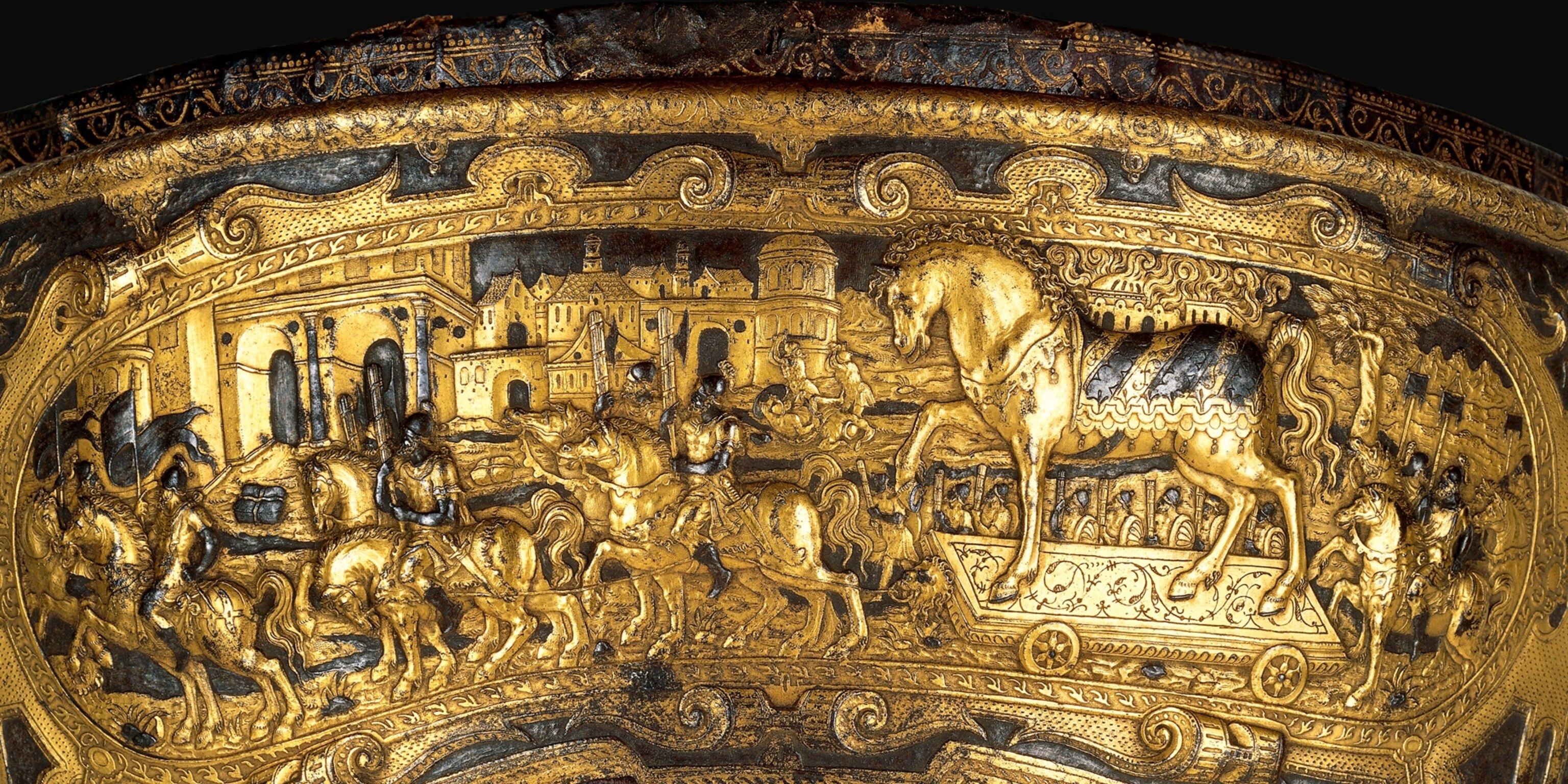
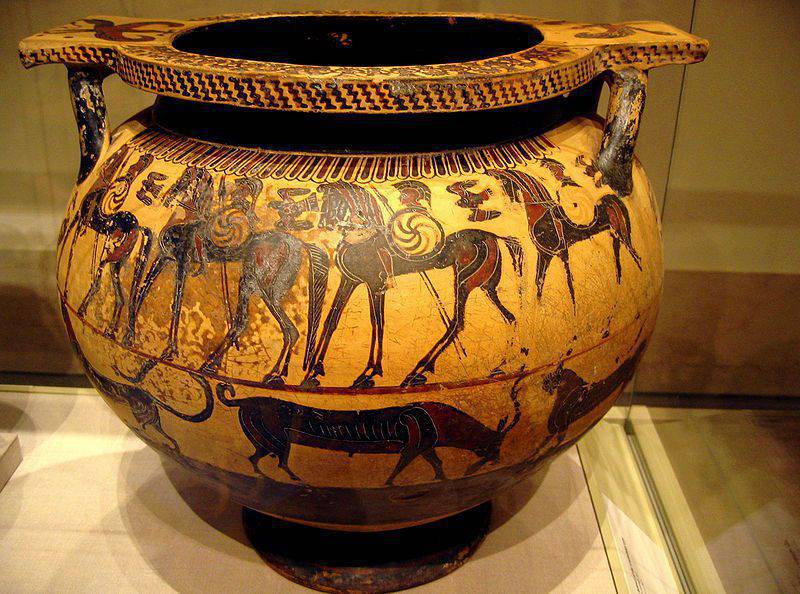
Black-figured ceramic vessel from Corinth depicting the characters of the trojan War. (Around 590 – 570 years BC. E.). (Metropolitan Museum, New York)
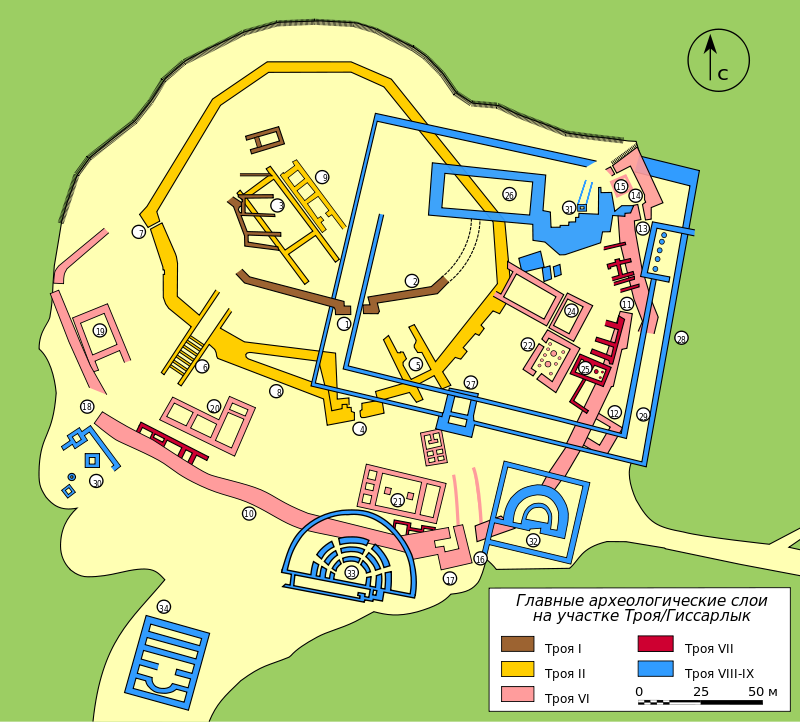
Many scientists of that time doubted that this was really troy, but he was patronized by the British Prime Minister William Gladstone, he got a professional archaeologist Wilhelm Dornfeld in his team and gradually the secret of the ancient city began to open! the most surprising discovery of them was that they found as many as nine cultural layers, that is, each time a new troy was built on the fragments of the previous one. the oldest, of course, was troy I, and the “youngest” troy IX of the Roman time. today, there are even more such layers (and sublayers) – 46, so it was not easy to study exactly troy!
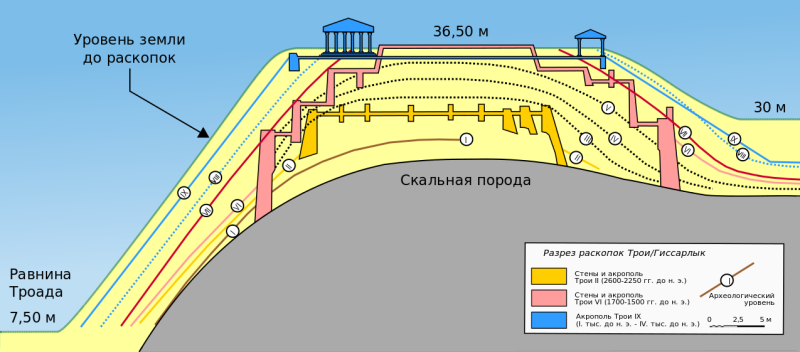
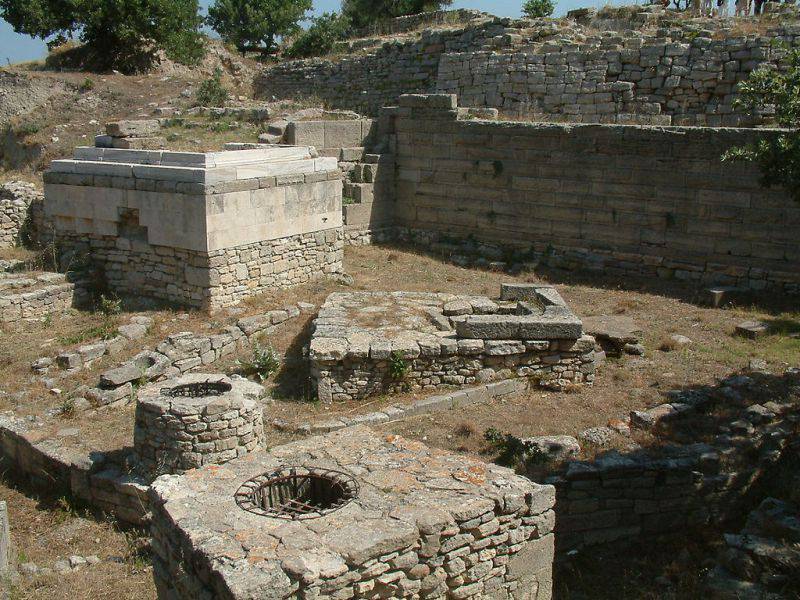
the ruins of ancient troy.
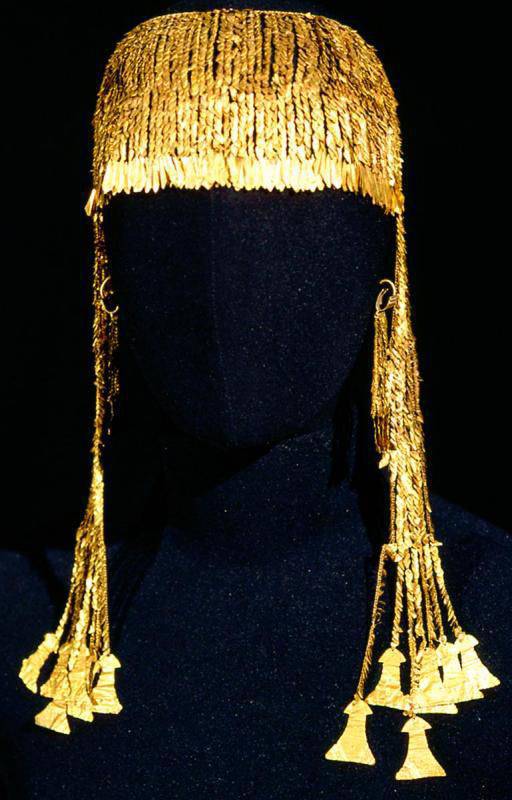
A large diadem from Clade A 2400 – 2200 BC. (the Pushkin Museum of Fine Arts)
And the good thing is that they were bronze, not iron, and therefore well preserved! So, this is what scientists, historians of various countries of the world, including the “master of swords” Ewart Okshott, think of swords and daggers of the epoch of the trojan war, in a so-called concentrated form …

Sword rapier type CI. Kudonia, Crete. Length xnumx see
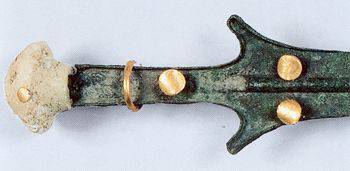
the earliest swords of the Aegean period were found in Anatolia, in turkey, and date back to about 3300 BC. er the evolution of bronze weapons is as follows: from a dagger or knife in the early bronze era, to swords (“rapiers”), optimized for a stabbing blow (middle bronze era), and then to typical swords with blades in the shape of a sheet from the late bronze age.
But one of the most interesting inventions of the Aegean Bronze Age was the great sword. these weapons, which appeared by the middle of the second millennium BC on the island of Crete and on the territory of mainland Greece, are different from all the early models.
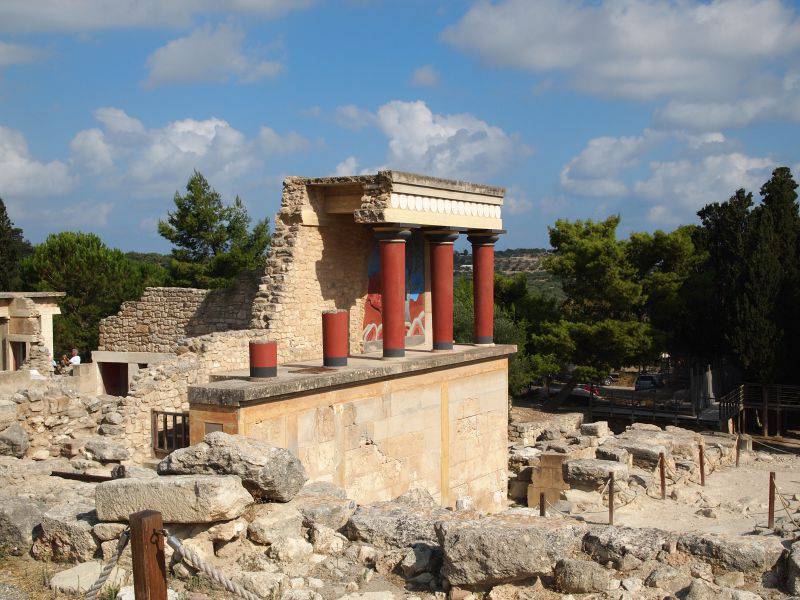
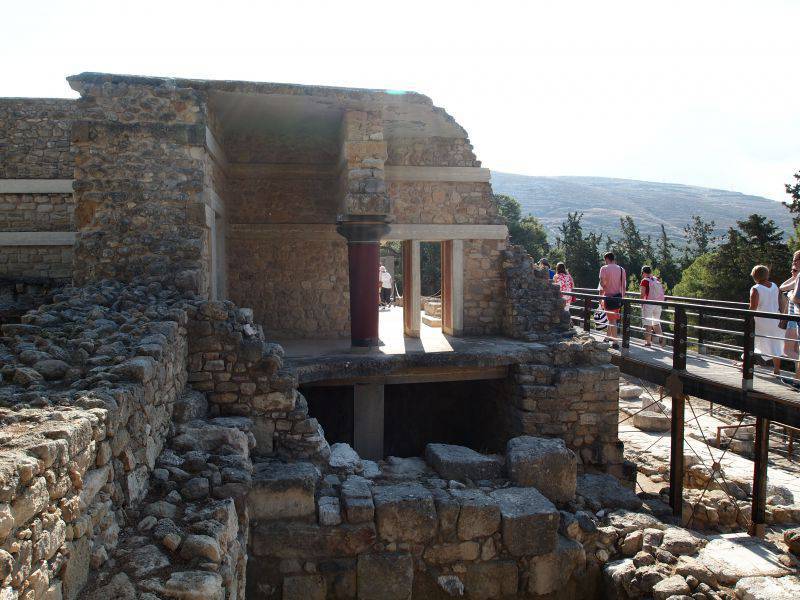
the territory occupied by the palace was huge and what they just did not dig. Photo by A. Ponomarev.
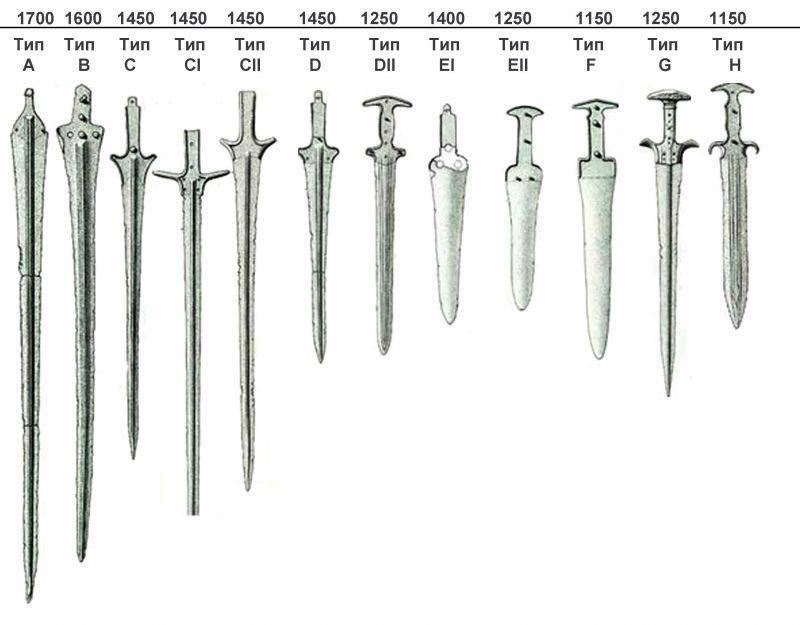
Sandars classification. It clearly shows that the most ancient swords for 500 years before the fall of troy (and it is believed to have taken place in 1250 BC) were extremely sharp! two hundred years before it came swords with V-shaped crosshairs and a high edge on the blade. the handle is now also cast together with the blade. For 1250, swords with an H-shaped handle, which in principle can be chopped and stabbed, are characteristic. Its base was molded together with the blade, after which wooden or bone “cheeks” were attached to it on rivets.

Dagger about xnumx g. BC. Length 1500 cm. Decorated with a notch with gold wire.
Long rapier swords were found in the palace on Crete in Mallia, in Mycenaean tombs, on the Cyclades, on the Ionian Islands and in Central Europe. Moreover, both in Bulgaria and in Denmark, in Sweden and in England. these swords sometimes reach a meter length. All have a rivet handle, a high diamond-shaped rib, except when it has a complex decor.
the hilt of these swords was made of wood or ivory and sometimes decorated with gold overlays. Swords are dated 1600 – 1500’s. BC, and the most recent samples to the period around 1400 BC. the length ranges from 74 to 111 cm. they find the sheath, or rather their remains. Based on these findings, it can be concluded that they were made of wood and often carried gold jewelry. Moreover, the preservation of metal and even wooden (!) Parts, which allowed the radiocarbon analysis of these products, makes it possible to completely reconstruct swords and daggers of this period, which was done, in particular, on the instructions of the archaeological museum in Mycenae.
Swords were worn on richly decorated lintels, the decor of which also reached our time. Well, a confirmation that such swords were stabbed are images of warriors who fight on rings and seals. At the same time, modern dating shows that a number of such swords were made in 200 years of the Homeric trojan War!

F2c sword reconstruction by Peter Connolly.
In this regard, many historians point out that such long piercing swords were in service with the “peoples of the sea” and, in particular, the famous shardan, known in Egypt for the images on the walls of the temple in Medinet-Abu 1180 BC.
It is worth paying attention once again to the fact that the existing opinion that these swords are suitable for anything but their immediate purpose is incorrect. the replicas of these swords were tested, and they demonstrated their high efficiency precisely as piercing weapons, intended to make deadly attacks in the fight of the most genuine swordsmen!
that is, today the finds of bronze swords and daggers in the Aegean Sea region are so voluminous that they made it possible to work out their typology and draw a number of interesting conclusions. It is clear that all of them simply can not be attributed directly to the trojan War. this is nonsense! But we can talk about the “Homeric time”, the Cretan-Mycenaean civilization, the “Aegean region”, etc.

Reconstruction of two swords Naue II with wooden handles on the rivets. this type of sword was characteristic of Central and Northern Europe around 1000 BC.
Moreover, the proliferation of such weapons in European countries tells us that perhaps trade relations at that time were significantly more developed than is commonly believed, so it is quite possible to say “European internationalization” and “integration” during the Bronze Age. Specifically, this can be expressed in the fact that there existed a certain seafarers people – the same “sea peoples”, who sailed around the whole of Europe and distributed Mycenaean and Cretan types of weapons, and, in particular, swords throughout the whole of Europe.
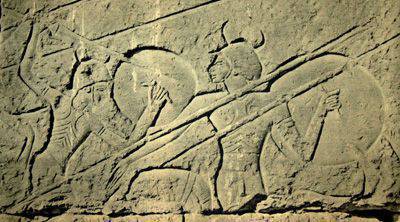
the image of the warriors of the “peoples of the sea” (Shardan) on the relief of Medinet-Abu.
Somewhere they found use, and where the war was different, these weapons were acquired as “overseas wonders” and sacrificed to the gods. In addition, we can conclude about tactics: there was a people whose soldiers were a caste, and quite closed. the warriors of this people learned to use their long piercing swords from childhood. And just to take this sword in hand, and it was impossible to cut them off from the shoulder. But then this caste died out.
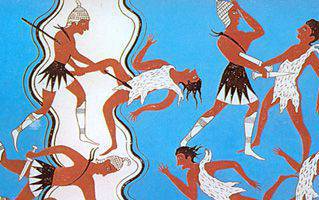
F type swords depicted on the fresco from Pylos (around 1300 BC)
It took the “soldiers” for the “mass army”, to teach which there was neither time nor strength, and the piercing swords very quickly changed the cutting ones. After all, the chop is intuitive in nature and much easier to master than an injection. Especially the sword of such a complex structure.
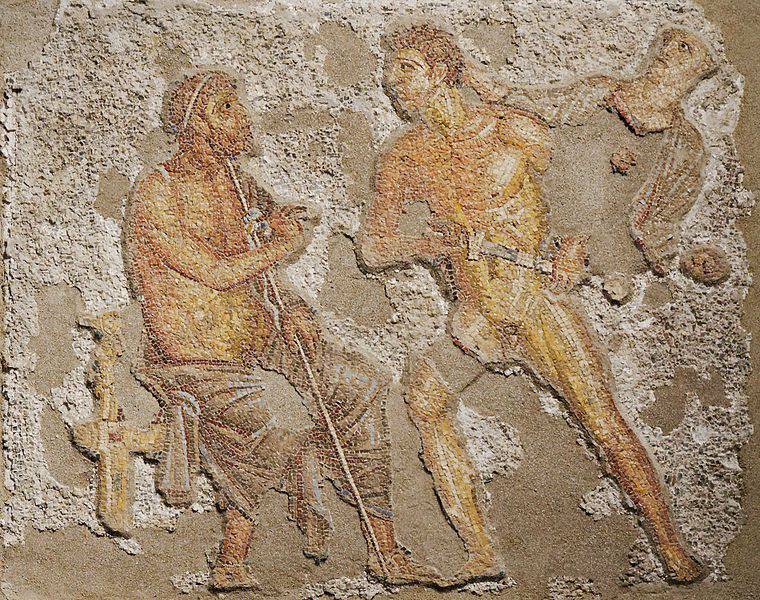
Achilles and Agamemnon: a Roman mosaic from Naples and … a roman sword on the thigh of Achilles!
Schemes A. Shepsa


